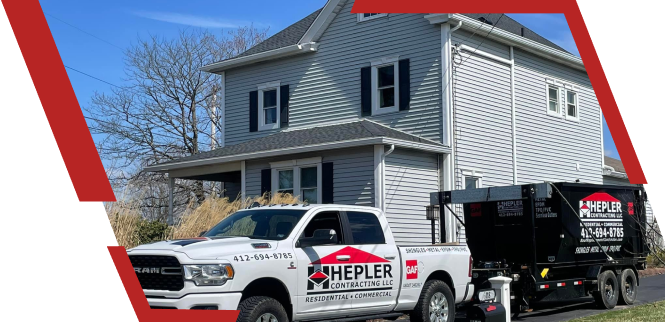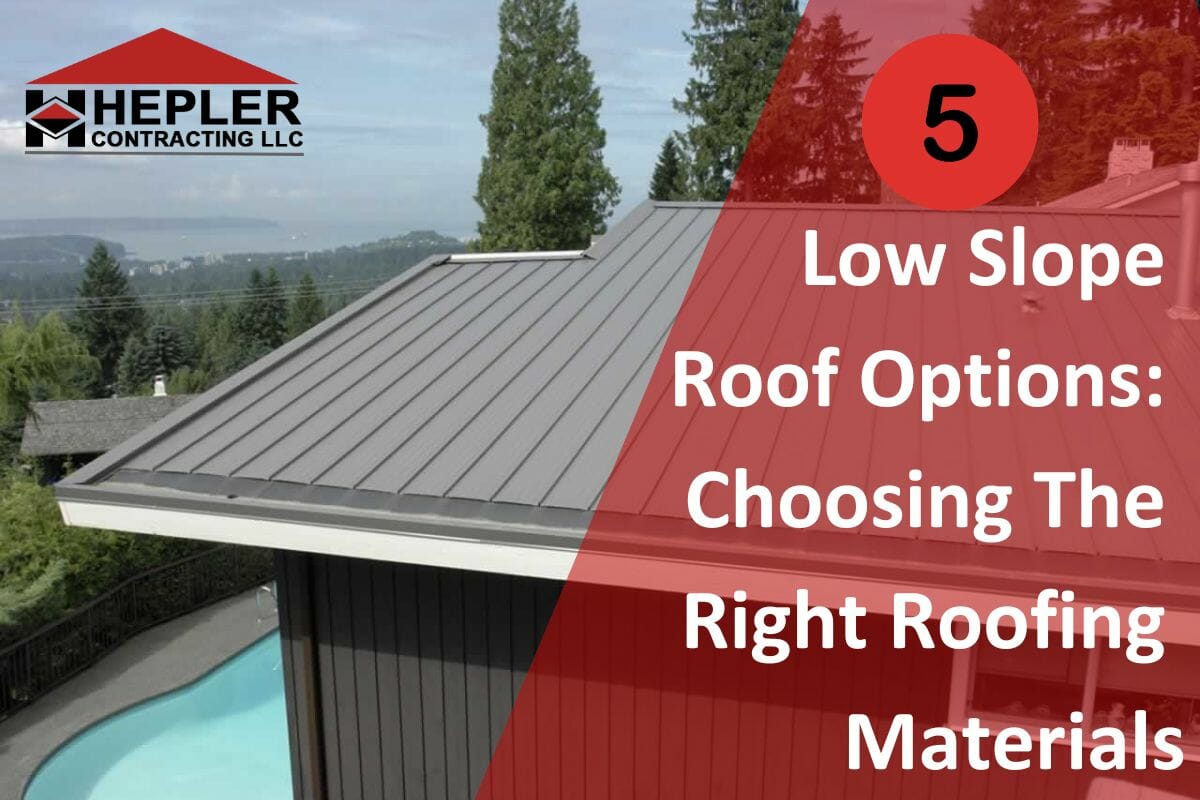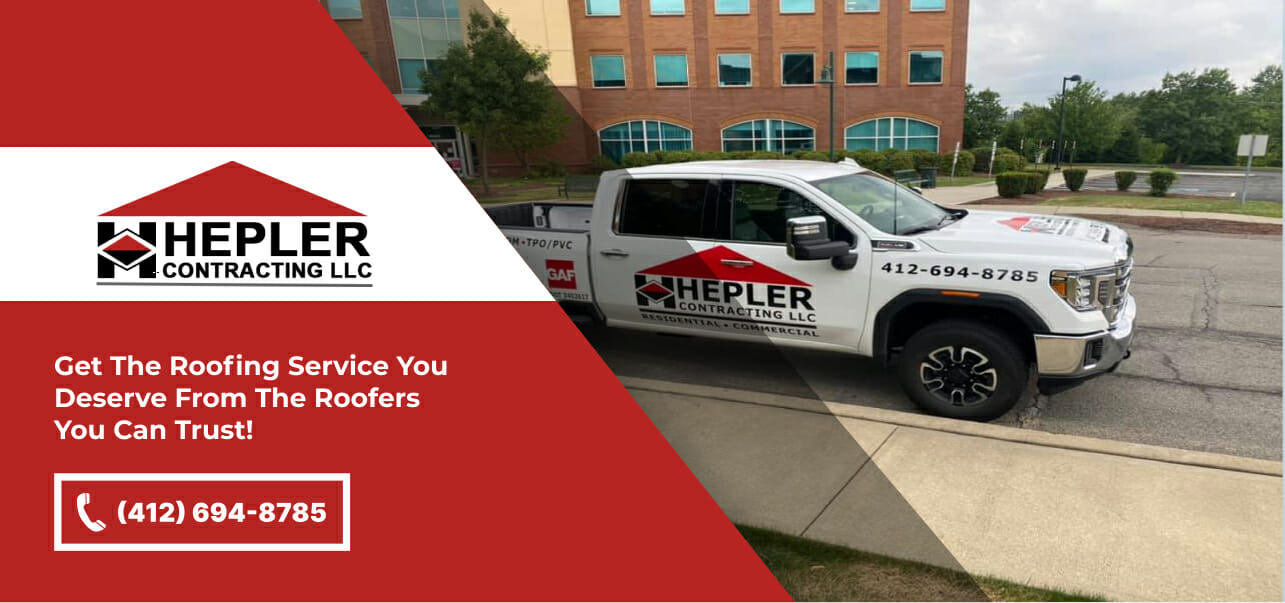When it comes to roofing systems, one size certainly doesn’t fit all. Whether you’re building a new property or renovating an existing one, choosing the right roofing material plays a pivotal role in ensuring the durability and protection of your investment. Low slope roof options are often different from pitched roofing materials. But what are the best options out there? In this guide, we’ll delve into the top choices and help you make an informed decision.
What Is A Low Slope Roof?
A low slope roof, also known as a flat roof, is a roof that appears level and is characterized by its minimal incline or pitch. Unlike traditional steep-sloped roofs which have a more noticeable slant, low slope roofs appear nearly flat and have a slight angle to facilitate water drainage and prevent pooling, which can lead to leaks and structural issues.
Low slope roofs are commonly found on a variety of structures, including residential homes, commercial buildings, industrial facilities, and even modern architectural designs. They offer a distinct visual aesthetic and practical benefits, making them a popular choice in various construction projects.
When it comes to ensuring the longevity and functionality of your flat roof, there’s no better option than an elastomeric roof coating. Learn more in our blog post: Why Elastomeric Roof Coating Is The Best For Your Flat Roof
5 Low Slope Roof Options
When it comes to low slope roofing materials, there is an array of options available. The beauty of these architectural choices lies in their ability to be tailored to your specific roofing needs. Whether you’re aiming for a modern edge or a blend of tradition and innovation, there’s a low slope roof option that’s perfect for your project. Let’s dive into the world of flat roof possibilities and explore five compelling choices that can transform your architectural vision.
1. Standing Seam Metal Roof
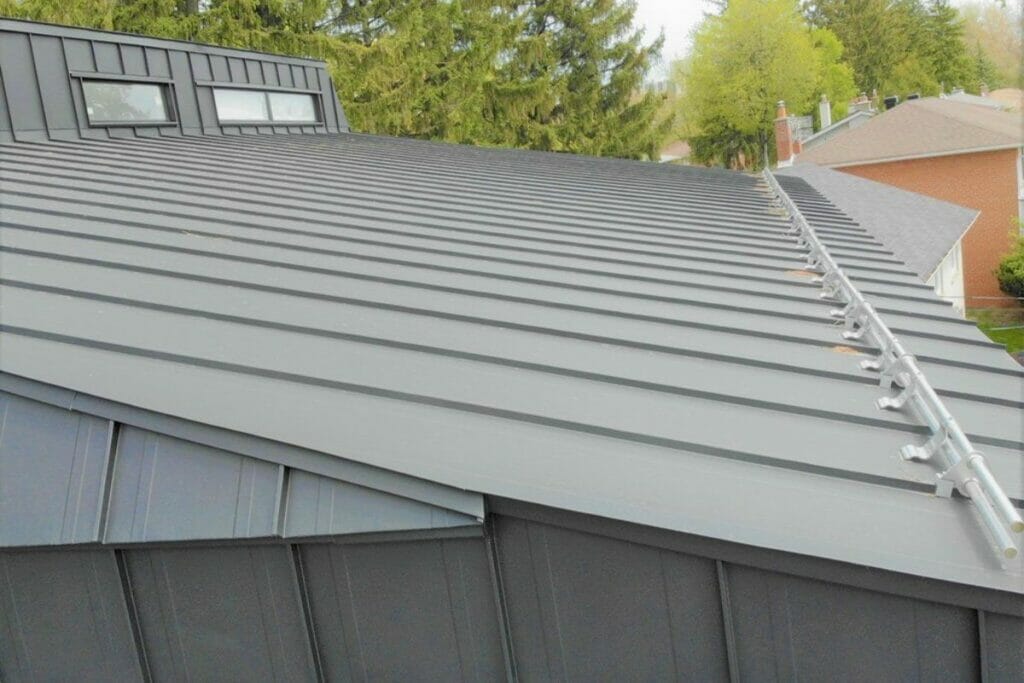
The fusion of form and function, a standing seam metal roofing system offers a sleek, contemporary appearance coupled with impressive durability. Its popularity is on the rise, and it’s easy to see why:
- Interlocking Metal Panels: The design features interlocking metal panels that promote efficient water drainage and provide a seamless finish.
- Modern Aesthetics: Clean lines and a bold presence give your structure a modern edge.
- Reduced Leak Risks: Minimally exposed fasteners translate to fewer potential leaks.
- Energy Efficiency: The reflective nature of metal contributes to energy efficiency by regulating interior temperatures.
2. Built-Up Roof (BUR) Membranes
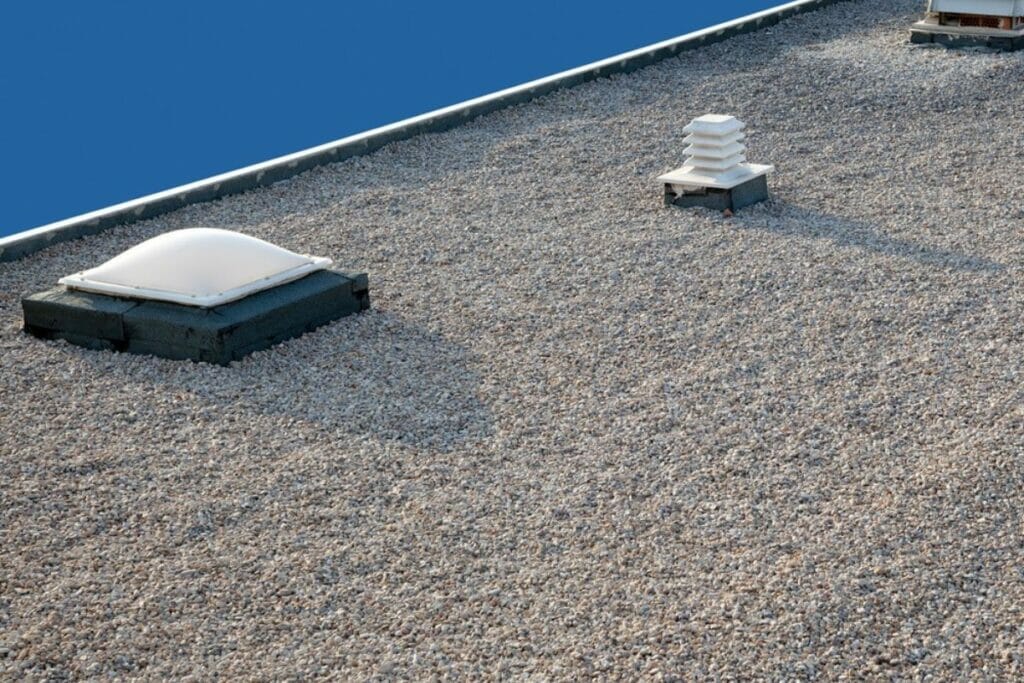
A tried-and-true choice, built-up roof membranes have stood strong as a dependable solution for low slope roofs for years:
- Layers Of Durability: Constructed with layers of bitumen and reinforcing fabrics, BURs create a robust, water-resistant barrier.
- Commercial Reliability: Ideal for commercial spaces with heavy foot traffic due to their strength and longevity.
- Proven Performance: BUR systems have a history of standing up to the test of time, making them a trusted option.
3. Single-Ply Roofing Systems
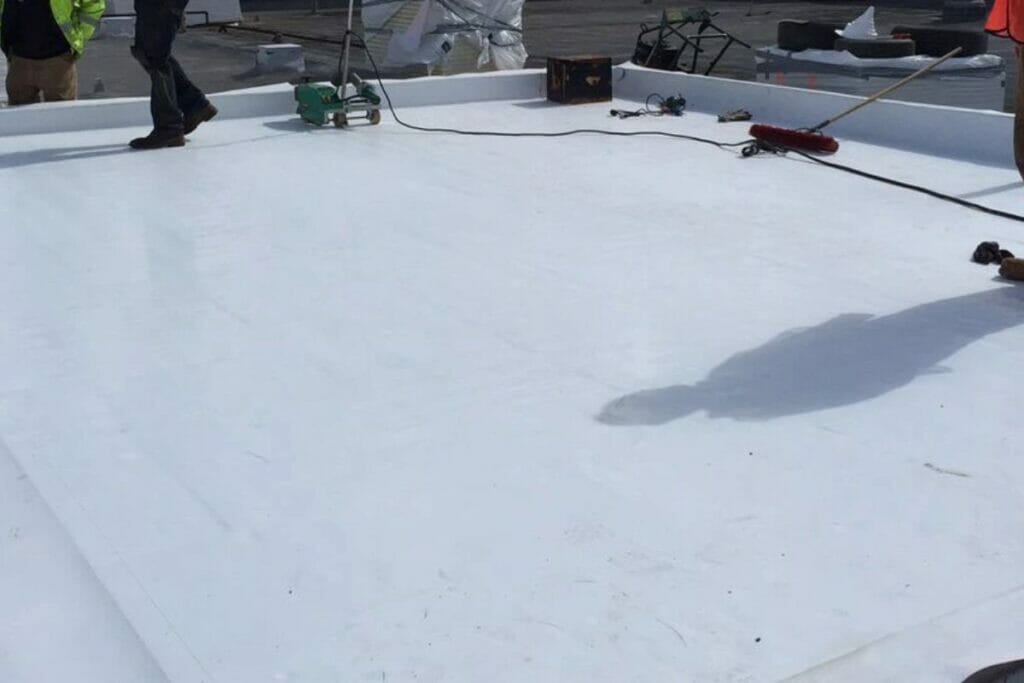
For those who value efficiency and simplicity, single-ply roofing is a lightweight yet effective choice:
- Synthetic Polymer: Single-ply systems consist of a single layer of synthetic polymer material, minimizing seams and potential points of leakage.
- Energy-Efficient Design: Many single-ply materials feature a white reflective surface that aids in energy efficiency by reducing heat absorption.
- Flexibility: These membranes are known for their flexibility, making them easy to install on various roof designs, aiding against cracking and warping even in extreme temperatures.
4. Modified Bitumen Roofing Systems
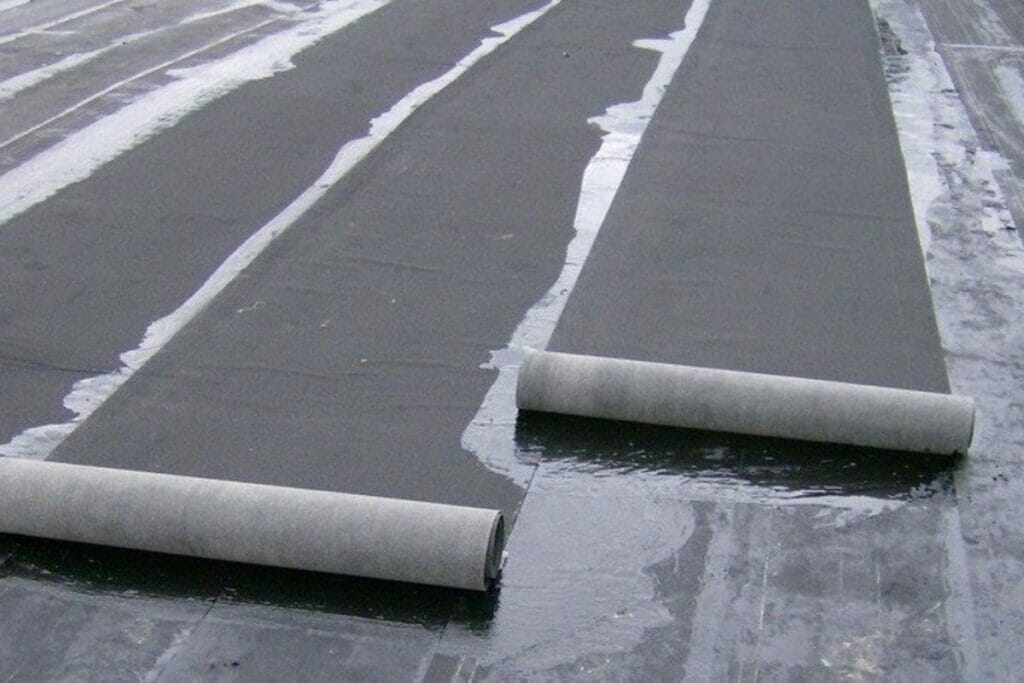
A bridge between traditional style and modern innovation, modified bitumen roofs offer the best of both worlds:
- Enhanced Durability: Modified with additives like APP or SBS, bitumen roofs are highly flexible.
- Extreme Weather Resilience: Suitable for regions with harsh weather conditions due to its ruggedness and durability.
- Ease of Repair: Repairing modified bitumen roofs is straightforward, adding to their appeal.
5. Shingle Roofs
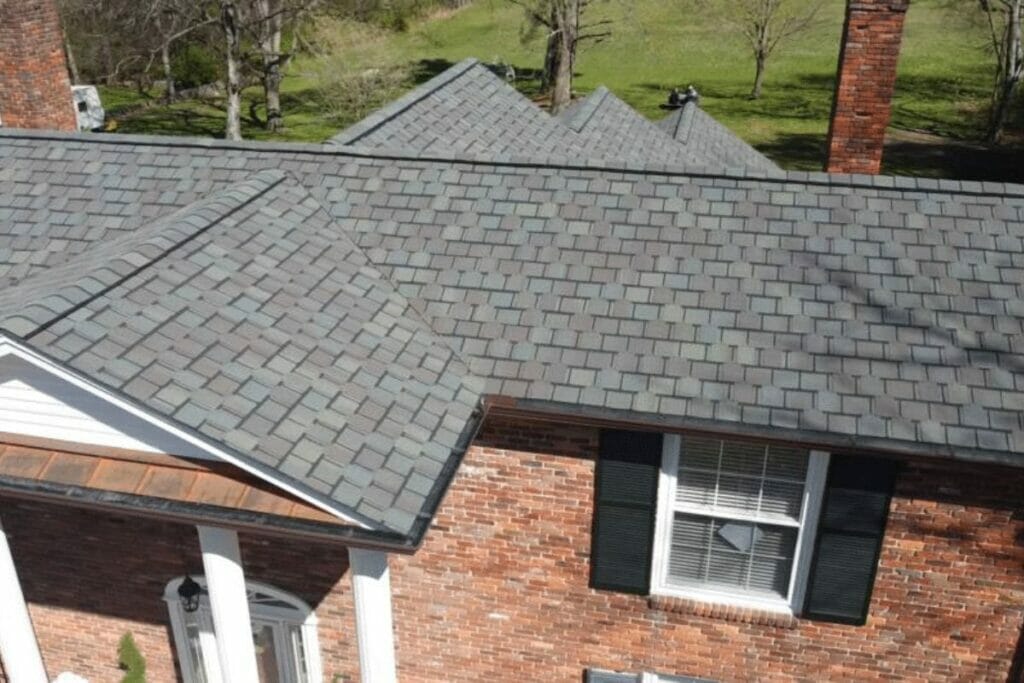
For those who appreciate the classic charm of shingles with a modern twist, a shingle roofing system is the perfect blend:
- Advanced Shingle Technology: These roofing systems combine traditional asphalt shingles with modern manufacturing techniques.
- Enhanced Protection: Shingle roofs often boast enhanced wind resistance and impact protection.
- Aesthetic Versatility: With a range of colors, styles, and textures, you can achieve a personalized look that suits your vision.
It’s important to note that shingles should not be used on a slope lower than 2/12 due to potential drainage problems.
In your quest to choose an ideal low slope roofing option, consider factors like the architectural style of your building, climate, maintenance requirements, and your budget. Each option brings its own set of advantages, ensuring that your choice of roofing material is as unique as your architectural vision.
Why Choose A Low Slope Roof?
There are several reasons why someone might choose a low slope roof for their building. A low slope roof has a slope that is relatively shallow, typically ranging from about 1/12 to 3/12, meaning for every 12 inches of horizontal distance, the roof rises by 1 to 3 inches vertically. Here are some reasons for why a low slope roof might be chosen:
1. Aesthetics: Low slope roofs can provide a sleek and modern appearance to a building. They are commonly used in contemporary and minimalist architectural designs.
2. Functional Space: Low slope roofs can be utilized as functional spaces. They can serve as outdoor living areas, rooftop gardens, or provide space for solar panel installations.
3. Cost-Effectiveness: Low slope roofs tend to be more cost-effective to construct compared to steep-sloped roofs. They require less roofing material and are generally easier to install.
4. Urban Settings: In densely populated urban areas, low slope roofs allow for efficient use of available space, especially for commercial buildings where rooftop equipment such as HVAC units can be easily accommodated.
5. Accessibility: Low slope roofs are easier to access and maintain. Technicians can perform maintenance, repairs, and inspections more safely and conveniently compared to steep-sloped roofs.
6. Energy Efficiency: Low slope roofs can be designed with energy-efficient features, such as cool roofing materials or the installation of solar panels. These features can help reduce energy consumption and costs.
7. Architectural Freedom: Designers and architects have more flexibility in designing the layout and appearance of a building when using a low slope roof. They can incorporate unique shapes and features that might not be feasible with steeper roofs.
8. Weather Resistance: Low slope roofs can be designed to have good water drainage systems, which helps prevent ponding water and reduces the risk of leaks, if properly designed and maintained.
9. Sustainable Design: When designed with environmentally friendly materials and features, low slope roofs can contribute to a building’s overall sustainability. They can support rainwater harvesting, green roofing systems, and solar energy generation.
It’s important to note that while there are benefits to low slope roofs, there are also some potential drawbacks. Proper design, material selection, and maintenance are crucial to avoid issues like ponding water, leaks, and reduced longevity.
Conclusion
Imagine gazing at your home’s new roof, a masterpiece that combines function and curb appeal seamlessly. A low slope roof offers advantages for all types of properties, including residential, commercial, industrial, and everything in between.
The choice of roof slope depends on various factors including the building’s purpose, climate, aesthetics, and budget considerations. Consulting with roofing professionals and architects is advised in order to determine the best roof type for your specific project.
Curious about potential problems low slope roofs face? Explore our article: 6 Common Issues With Low Sloped Roofs And How To Fix Them
For expert assistance in bringing your low slope roof dreams to life, reach out to Hepler Contracting at (412) 694-8785. Serving the Pittsburgh area, we are your go-to professionals for top-notch roofing solutions that combine style and functionality.
FAQ’s
A. Yes, low slope roofs are versatile and can be adapted for various types of buildings. Whether it’s a contemporary home, a commercial space, or an industrial facility, low slope roofs can seamlessly be integrated into any architectural design.
A. While low slope roofs offer numerous advantages, proper design, material selection, and maintenance are crucial. Issues like ponding water and leaks can lead to reduced longevity without proper care. It’s essential to consult roofing professionals and architects for the best outcome.
A. Yes, low slope roofs can accommodate solar panels. Their relatively flat surface provides an ideal platform for solar installations, contributing to energy efficiency and potential cost savings over time.
A. Selecting the right roofing material, adhering to proper design practices, and conducting regular maintenance are key to ensuring the longevity of your low slope roof. Promptly addressing any issues that arise is also essential.
